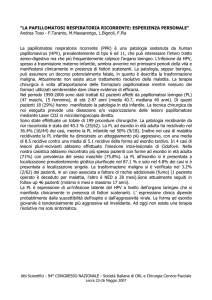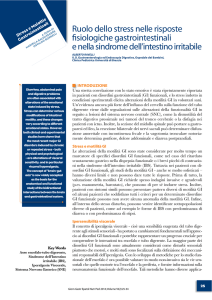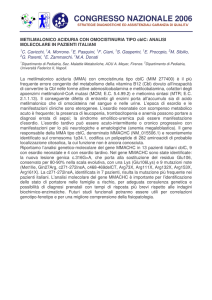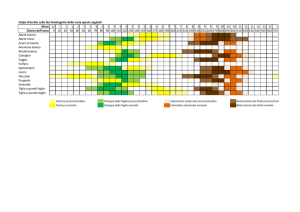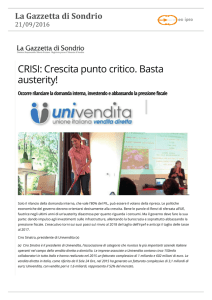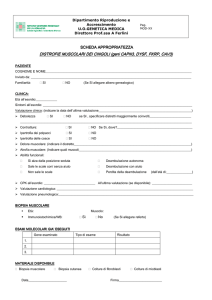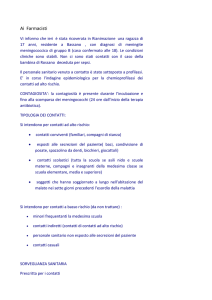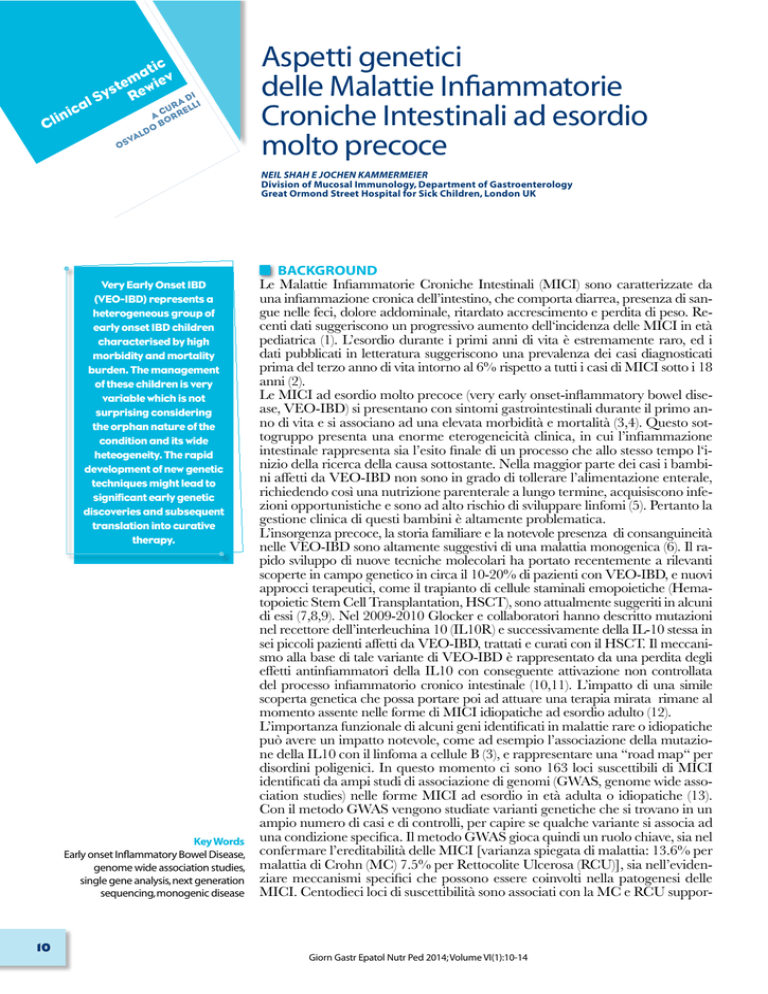
ic
at v
m
ie
te
ys Rew
I
S
AD I
l
ica
in
Cl
L
VA
U R E LL
A CORR
B
DO
OS
Aspetti genetici
delle Malattie Infiammatorie
Croniche Intestinali ad esordio
molto precoce
NEIL SHAH E JOCHEN KAMMERMEIER
Division of Mucosal Immunology, Department of Gastroenterology
Great Ormond Street Hospital for Sick Children, London UK
BACKGROUND
Very Early Onset IBD
(VEO-IBD) represents a
heterogeneous group of
early onset IBD children
characterised by high
morbidity and mortality
burden. The management
of these children is very
variable which is not
surprising considering
the orphan nature of the
condition and its wide
heteogeneity. The rapid
development of new genetic
techniques might lead to
significant early genetic
discoveries and subsequent
translation into curative
therapy.
-
-
-
-
-
Key Words
Early onset Inflammatory Bowel Disease,
genome wide association studies,
single gene analysis, next generation
sequencing, monogenic disease
10
-
Giorn Gastr Epatol Nutr Ped 2014; Volume VI(1):10-14
Genetica delle IBD ad esordio molto precoce
-
TEST GENETICI IN PAZIENTI CON MICI AD ESORDIO MOLTO PRECOCE
-
CARATTERIZZAZIONE FENOTIPICA DELLE VEO-IBD
-
[Figura 1]
-
MICI ad esordio molto precoce con caratteristiche fenotipiche chiare (stimato 10%).
Stabilire il fenotipo del paziente per individuare
specifiche caratteristiche di malattia
Si
No
Analisi del Singolo Gene
(Sequenziamento Sanger)
Next Generation Sequencing
(NGS)
Figura 1 Approccio all’analisi genetica in bambini con MICI ad esordio molto precoce
-
[Figura 2]
Difetti della barriera intestinale
e alterata risposta allo stress.
Es. Deficit NEMO
Difetti del controllo della
risposta immune innata ed adattiva.
Es. Deficit del Pathway dell’IL-10
Alterata selezione e attivazione
dei Linfociti T e B.
Es. IDCV Tipo 1
Disordini autoinfiammatori.
Es. Deficit XIAP
Immunodeficienze che coinvolgono
l’attività dei granulociti e dei fagociti.
Es. Malattia Granulomatosa Cronica
Figura 2 Esempio di cinque condizioni associate a MICI ad esordio molto precoce con le caratteristiche fenotipiche fondamentali
Giorn Gastr Epatol Nutr Ped 2014; Volume VI(1):10-14
11
Clinical Systematic Rewiev
-
MICI ad esordio molto precoce con caratteristiche fenotipiche non chiare (90% stimate).
-
-
1) un pannello di geni selezionati utlizzati come target per il sequenziamento
2) Whole Exome Sequencing (WES), in cui tutti gli esoni di un individuo sono dei target
e sono quindi sequenziati, oppure Wide Genome Sequencing (WGS) in cui il target
per il sequenziamento è l’intero genoma (si stima che l’esoma rappresenti solo l’1%
del genoma).
-
CONOSCENZE ATTUALI DELLA SEGREGAZIONE GENETICA
NELLE MALATTIE INFIAMMATORIE CRONICHE INTESTINALI
AD ESORDIO MOLTO PRECOCE MONOGENICHE
Uhlig
Uhlig
12
-
Tabella 1
-
Giorn Gastr Epatol Nutr Ped 2014; Volume VI(1):10-14
Genetica delle IBD ad esordio molto precoce
Tabella 1 Categorie di malattie monogeniche con fenotipo MICI secondo H. Uhlig (19)
Patologie associate con Infiammazione Intestinale
Gene
Caratteristiche Cliniche Chiave
Immunodeficienza e displasia ectodermica X-linked
IKBKG
Alopecia, alterazioni dentarie (denti conici)
e pelle secca (anidrosi)
Deficit di TTC7A
TTC7A
Ostruzioni intestinali neonatali dovute
ad atresie intestinali multiple
Sindrome tricoepatoenterica
TTC37
SKIV2L
Alterazioni dei capelli (tricoressi nodosa)
in bambini con epatopatia e moderati
dismorfismi facciali
Sindrome IPEX/-like
FOXP3
IL2RA
STAT1
Eczema grave in bambini con endocrinopatie
ad esordio precoce (più frequentemente DM
tipo 1)
Deficit del Pathway IL10
IL10
IL10RA
IL10RB
Infiammazione perianale estesa e presenza
di fistole entro i primi mesi di vita
CORRESPONDING AUTHOR
NEIL SHAH MD, PHD
Division of Mucosal Immunology
Department of Paediatric Gastroenterology
Great Ormond Street Hospital for Sick Children
Great Ormond Street, WC1N 3HZ London, UK
Tel. + 44(0)20 7405 9200 ext 5971
E-mail: [email protected]
BIBLIOGRAFIA
1.
2.
3.
4.
5.
6.
7.
8.
9.
10.
11.
12.
13.
14.
Giorn Gastr Epatol Nutr Ped 2014; Volume VI(1):10-14
13
Clinical Systematic Rewiev
15.
16.
17.
18.
19.
Key Points
-
14
Giorn Gastr Epatol Nutr Ped 2014; Volume VI(1):10-14



